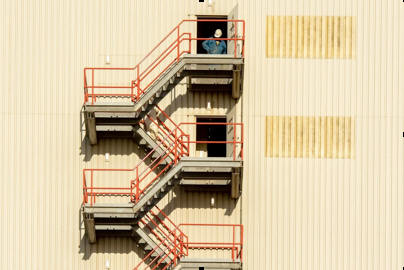 (6/25) Building safety standards set methods and regulations to assure building integrity and safety.
(6/25) Building safety standards set methods and regulations to assure building integrity and safety.
These standards protect residents and the public by ensuring buildings can resist natural disasters, fire, and structural failures. Maintaining these standards is both legal and moral to safeguard lives and property.
The role of fire safety measures
Critical to building safety is developing and implementing thorough fire safety procedures. Fire evacuation plans are vital because they provide a clear and systematic way to evacuate persons safely. These plans cover evacuation routes, use of fire safety equipment, and outside meeting spots. This requires regular drills and training to ensure that all residents know the plans and can act quickly and appropriately in an emergency. Compliance with fire evacuation plans is necessary and can greatly decrease fire-related injuries and deaths.
Legal and regulatory framework
Building safety laws vary by country and location, but the essential concepts remain. Governments and regulators set these standards to ensure construction safety. They include fire safety, structural integrity, electrical safety, and accessibility. Non-compliance can lead to fines, legal action, and building closure. Thus, building owners, developers, and managers must keep up with new legislation and guarantee their properties meet all standards.
The impact of non-compliance
Failure to follow construction safety requirements can be disastrous. Electrical fires, structural breakdowns, and other risks can kill and damage. Legal liabilities for non-compliant buildings can damage organisations' reputations and cause financial losses. Unsafe structures may also be denied insurance, putting owners and occupants at financial risk. Compliance is a legal requirement and a key part of risk management.
The role of technology in compliance
Technology makes it easier for building owners and managers to meet safety criteria. BIM and other digital tools enable precise building safety planning and monitoring. These instruments can identify dangers and assure building safety during construction and maintenance. Smart building technology also gives real-time monitoring and notifications to fix issues quickly and comply.
Best practices for ensuring compliance
Compliance with building safety requirements needs proactiveness. Safety hazards must be identified and addressed through regular inspections and maintenance. Building owners and managers should collaborate with architects, engineers, and safety consultants to update and improve safety measures. Regular employee training and emergency exercises should familiarise all occupants with evacuation and safety procedures. Compliance requires being abreast of regulatory developments and industry best practices.
The future of building safety standards
Building safety regulations will change as technology advances and new threats emerge. Climate change, urbanisation, and technology bring new building safety issues and opportunities. Future standards will likely require more environmental sustainability, natural catastrophe resilience, and smart technology integration. Building owners and managers must monitor and adjust these patterns to maintain compliance and safety.
Conclusion
Keeping building occupants safe and healthy requires compliance with safety requirements. These standards cover fire evacuation plans, building integrity, and accessibility to reduce risks and save lives. Therefore, proactive management and regulatory compliance are crucial. Non-compliance can have serious implications. Building owners and managers can keep facilities safe, compliant, and future-ready with contemporary technology and best practices.